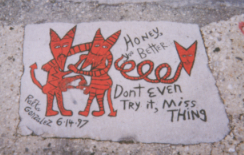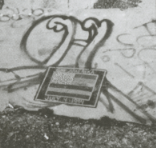As LGBT Pride Month draws to a close, there’s a lot left to think about. Just last Friday, New York became the 6th (and largest) state to legalize same-sex marriage. It was not a Pride Month many New Yorkers will forget.
Today we offer up a final Pride Month post. Below, we talk with Christopher Reed, Associate Professor of English and Visual Culture at Pennsylvania State University, and author of Art and Homosexuality: A History of Ideas. If you’d like to learn more, listen to our podcast with Reed here.
Sexuality in art is a very personal thing, expressed and interpreted in many different ways. What does sexuality in art mean to you?
That depends on what you mean by “personal.” It’s true, of course, we all experience our own erotic and aesthetic emotions personally, but they are experienced in relation to other people or things. And the categories of “Sexuality” and “art” are social and collective. Different cultures create and develop them in different ways. The book is about hose patterns.
One of the primary ways our culture has defined art and sexuality is as expressions of individualism — that is as “personal.” Our culture puts huge — probably historically unprecedented — value on the idea of individualism. Because we have made art and sexuality primary markers of individualism, they are enormously important to our culture. Just look at the expenditures of time and money we devote to them — and at the intense pleasures and frustrations they bring us.
But if we look at how tastes change — takes in sex and in art — we see that they do so across cultures. It’s paradoxical but true: our sense of what individualism is is shared and collective.
What this book does is trace the way modern culture conjoined the kinds of individualism represented by the “artist” and the “homosexual” so that these were seen as closely interrelated types: outsiders, sensitive to aesthetics, who gravitated to cities and shocked conventional sensibilities by acting on their unconventional impulses.
As you say in the book, “it is one thing to sell copies of a book with a lesbian plot that can be secreted in personal libraries, and quite another to market an expensive painting that marks the buyer’s rooms for any visitor to see.” (pg. 76) Could you further discuss the differences and similarities between the acceptance of paintings, prints, and sculptures versus other forms of art (including literature and film)?
One of the great modern myths is that the art-world “avant-garde” is a realm of radical, free-wheeling, anything goes experimentation. The persistence of this myth is evidenced of its importance to our culture’s ideas about individualism, because if you think about it rationally for two seconds, the myth simply can’t be true.
Historically the “avant-garde” was created by the upper-middle classes, who paid for it by subsidizing its institutions, buying its products, entertaining its members. Clearly, the “avant-garde” produced something that the wealthy classes wanted. That something was exemplary individualism, but it had to be a kind of individualism that did not fundamentally threaten established values. This is the fundamental dilemm




